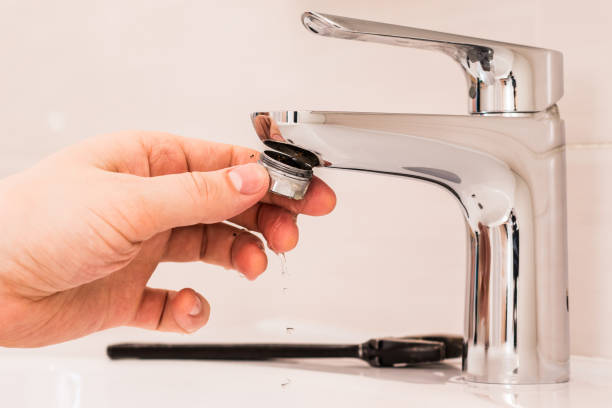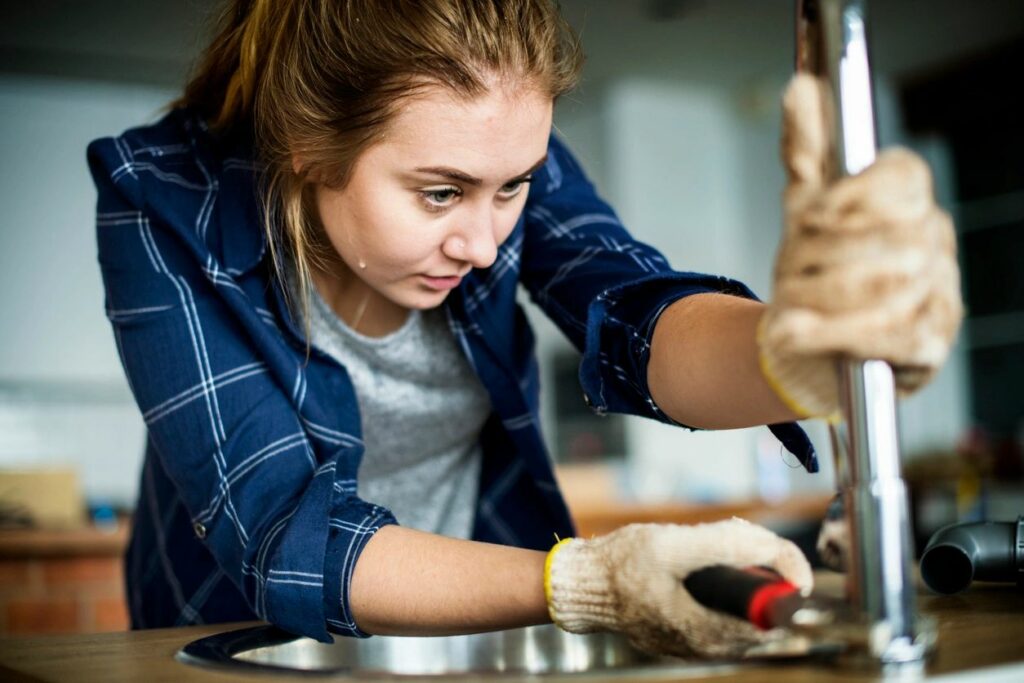When It's Crucial to Address a Broken Faucet
When It's Crucial to Address a Broken Faucet
Blog Article
Every person is bound to have their private conception involving Leaky Faucets: Why They Happen & What to Do About Them.

Leaking faucets may appear like a minor trouble, however their effect exceeds just the annoyance of the sound. From drainage to incurring unnecessary economic prices and health and wellness dangers, ignoring a dripping tap can result in various effects. In this post, we'll delve into why it's vital to address this usual home issue without delay and efficiently.
Wastefulness of Water
Environmental Influence
Dripping taps add considerably to water wastefulness. According to the Environmental Protection Agency (EPA), a solitary tap dripping at one drip per secondly can throw away greater than 3,000 gallons of water each year. This not only stress water sources however additionally influences communities and wildlife based on them.
Financial Prices
Increased Water Bills
Beyond the environmental impact, dripping faucets can blow up water costs considerably. The accumulated wastage over time converts right into greater energy costs, which could have been avoided with timely fixings.
Prospective Home Damage
In addition, prolonged dripping can lead to harm to fixtures and surface areas bordering the faucet. Water build-up can create staining, deterioration, and also architectural concerns if left ignored, leading to extra repair service costs.
Health and wellness Problems
Mold and Mold Growth
The consistent presence of wetness from a trickling faucet produces a perfect atmosphere for mold and mildew and mold growth. These fungi not just compromise indoor air high quality yet additionally pose health and wellness dangers, specifically for people with respiratory system problems or allergic reactions.
Waterborne Conditions
Stagnant water in leaking faucets can end up being a breeding place for germs and other pathogens, increasing the risk of waterborne diseases. Impurities such as Legionella microorganisms prosper in stationary water, possibly causing major diseases when consumed or breathed in.
DIY vs. Specialist Repair service
Benefits and drawbacks of DIY Fixing
While some may try to fix a trickling faucet themselves, do it yourself repairs feature their own collection of obstacles. Without appropriate expertise and tools, do it yourself efforts can intensify the issue or cause insufficient repairs, extending the trouble.
Advantages of Hiring an Expert Plumber
Working with a specialist plumber ensures that the underlying reason for the leaking faucet is addressed successfully. Plumbing professionals possess the competence and devices to identify and repair faucet problems effectively, saving time and decreasing the danger of further damage.
Step-by-Step Guide to Repairing a Dripping Tap
Tools Called for
Before trying to take care of a leaking faucet, collect the needed tools, consisting of a flexible wrench, screwdrivers, replacement components (such as washers or cartridges), and plumber's tape.
Common Tap Issues and Their Solutions
Identify the sort of faucet and the particular concern triggering the drip. Usual issues consist of worn-out washing machines, corroded valve seats, or damaged O-rings. Refer to maker directions or on-line tutorials for step-by-step support on repairs.
Preventive Measures
Routine Maintenance Tips
To stop leaking taps, carry out regular maintenance such as cleaning up aerators, evaluating for leaks, and changing worn-out components promptly. Furthermore, take into consideration setting up water-saving tools or updating to much more reliable components.
Significance of Prompt Services
Dealing with trickling taps as quickly as they're noticed avoids additional water waste and potential damages, inevitably saving both water and cash in the future.
Effect On Building Worth
Understanding of Well-Maintained Home
Maintaining a property in good condition, consisting of addressing upkeep issues like leaking taps, improves its regarded value and charm among prospective customers or renters.
Influence on Resale Value
Properties with well-kept plumbing components, consisting of taps, command higher resale worths in the real estate market. Resolving trickling taps can add to a positive impact during property assessments and settlements.
Ecological Duty
Specific Payment to Conservation
Taking duty for repairing dripping faucets lines up with more comprehensive initiatives toward water conservation and environmental sustainability. Every person's actions collectively make a considerable effect on protecting valuable resources.
Sustainable Living Practices
By prioritizing prompt fixings and adopting water-saving routines, people add to lasting living techniques that benefit both present and future generations.
Verdict
Resolving a leaking faucet goes beyond plain comfort; it's a necessary step towards preserving water, minimizing financial prices, and protecting health and building. Whether with do it yourself repair work or expert aid, doing something about it to fix trickling taps is a little yet impactful means to promote liable stewardship of resources and contribute to a healthier, extra sustainable future.
How to Fix a Dripping or Leaky Faucet
A leaking faucet is one of the most common problems that homeowners encounter, but it being commonplace doesn’t make it any less annoying. The constant drip drip drip of a leaking bathtub faucet, showerhead, or sink tap can disturb your home’s serenity. Left neglected, a dripping faucet can also result in higher water bills and discoloration or mold growth in your sink or plumbing fixtures.
Fortunately, you don’t have to be a trained plumber to know how to stop a dripping faucet. With some basic tools, replacement parts, and a little patience, leaky faucet repair is a breeze. In this article, we’ll explain what causes dripping faucets and how you can fix them.
What Causes a Leaking Faucet?
Kitchen and bathroom faucets come in all manner of designs, but most involve some combination of valves, O-rings, seals, and washers. The O-ring is usually the weakest link, but any one of these pieces can wear down over time. Heat, moisture, temperature fluctuations, minerals, mold, and movement can contribute to warping and corrosion, breaking the watertight seal. This just comes with the territory of being a homeowner. Everything is always subject to wear and tear, and some component parts of your appliances and fixtures need to be replaced on occasion. At least replacement O-rings are cheap!
More rarely, dripping faucets can be a symptom of excessively high water pressure. Were this the case in your home, you would probably notice that the leak is not isolated to one faucet. Water pressure issues are harder to resolve on your own. We recommend contacting a professional plumber if you suspect your water pressure is too high.
How to Fix a Dripping Faucet
Pipe wrench or monkey wrench Allen wrench set Screwdrivers Old towel or rag Shut off the water.
Before you do anything, you need to turn off the water to keep from drenching your kitchen or bathroom. You should find a valve under the sink and against the wall. Once you’ve turned this valve, try turning the faucet on to confirm that the water source has been cut off.
If you can’t locate your local valve for the faucet you’re working on, you can always shut off the water to the house at the main valve. Of course, this will prohibit anyone from using the sinks, showers, or toilets while you’re working on the faucet that’s giving you trouble.
Plug or block the drain.
You’ll be disassembling the faucet and removing some small bits of hardware. Plug the drain with a stopper or rag to avoid the possibility of a small screw falling into your P-trap.
Take apart the faucet assembly.
There are several varieties of kitchen and bathroom faucets, each with its own manner of assembly. For detailed instructions on how to disassemble your faucet, you can refer to the fixture’s manual or contact the manufacturer. If you know whether you have a ball, disc, cartridge, or compression faucet, you can find detailed schematics online.
In general, you need to begin by removing the faucet handles. You might notice a small screw that you’ll need to remove with a screwdriver or Allen wrench. If you don’t see any visible securing hardware, it’s likely hidden under a decorative cap that can be unscrewed or popped off with flathead screwdriver.
Remove each piece methodically, consulting a schematic when necessary. Take notes or arrange the pieces in such a way to make it easier to correctly reassemble the faucet later.
Remove the cartridge.
Once you’ve removed the handles and securing hardware, you should be able to remove the valve cartridge or stem. Some cartridges will slide right out. Other faucet models will require you to loosen a nut with a pipe wrench before you can remove the valve stem.
Examine the exposed hardware.
With the cartridge or stem removed, inspect the component parts. Check the rubber O-rings for wear and tear. Also examine the seat washer for corrosion or other damage. These pieces are usually the responsible parties for a dripping faucet, but it’s worth inspecting the other component parts while you have the faucet disassembled.
Find replacement parts.
Once you’ve identified which faucet component has failed, find an identical replacement. Your local hardware store should have O-rings, seat washers, and other standard components in stock. If you have a luxury or uncommon faucet, you may have to contact the manufacturer for a replacement part.
It’s a good idea to take your old parts with you to the hardware store so you can compare them with the store’s inventory and be sure you’re purchasing the correct replacement.
Reassemble the faucet.
With your new parts in hand, reconstruct the faucet and handles. Don’t be tempted to overtighten screws or nuts. You might think this could create a better seal, but it can instead damage or bend a delicate part of the assembly and create a new problem for you.
Turn on the water and test the faucet.
The only thing left to do is test your work. Unplug the sink, turn the water back on, and try the faucet. Congratulate yourself on a job well done!
https://www.libertyhomeguard.com/how-to-fix-a-dripping-or-leaky-faucet/

Do you enjoy reading up on Why Are My Faucets Dripping (And Can I Fix It Myself)?? Put a remark directly below. We will be happy to find out your thoughts about this page. Hoping that you come back again before long. Sharing is nice. Helping others is fun. We thank you for reading our article about Leaky Faucets: Why They Happen & What to Do About Them.
Report this page